California Naturalist Outing
Upper Arroyo Park/Trail
JPL Bridge – Millard Canyon
9 a.m. – 11:30 a.m.
- Route: Entering at the fence line, north. Stopping along the creek, road, and trail.
- Weather: Warm, 70° F, clear with a few clouds very high in the sky. Air was dry.
Visit to the Lower Arroyo Seco
This trip into the Upper Arroyo consisted of a solo adventure along the creek bed up to the third bridge over the creek.
Along the banks of the creek throughout, were a wild mix of California Sage, buckwheat, alders, mugwort, willows, and mule fat. In some stretches, alders lined both banks forming a high ceiling canopy that enclosed the space. Water was consistent from upstream all the way down to the JPL bridge. In the cleft, the air (and water) was much cooler with lots of human activity by way of young (2-3 years old) with adults playing and exploring.
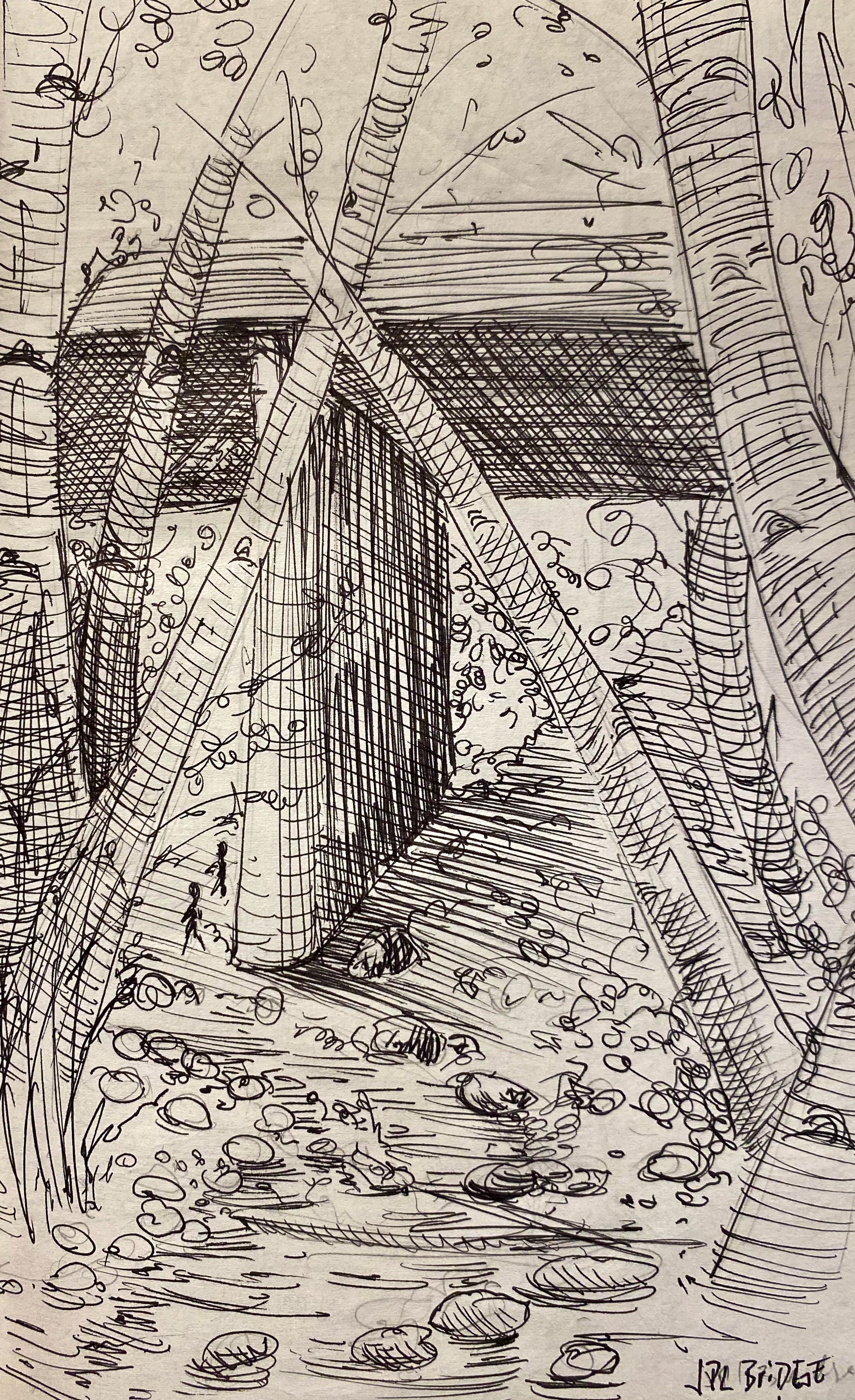
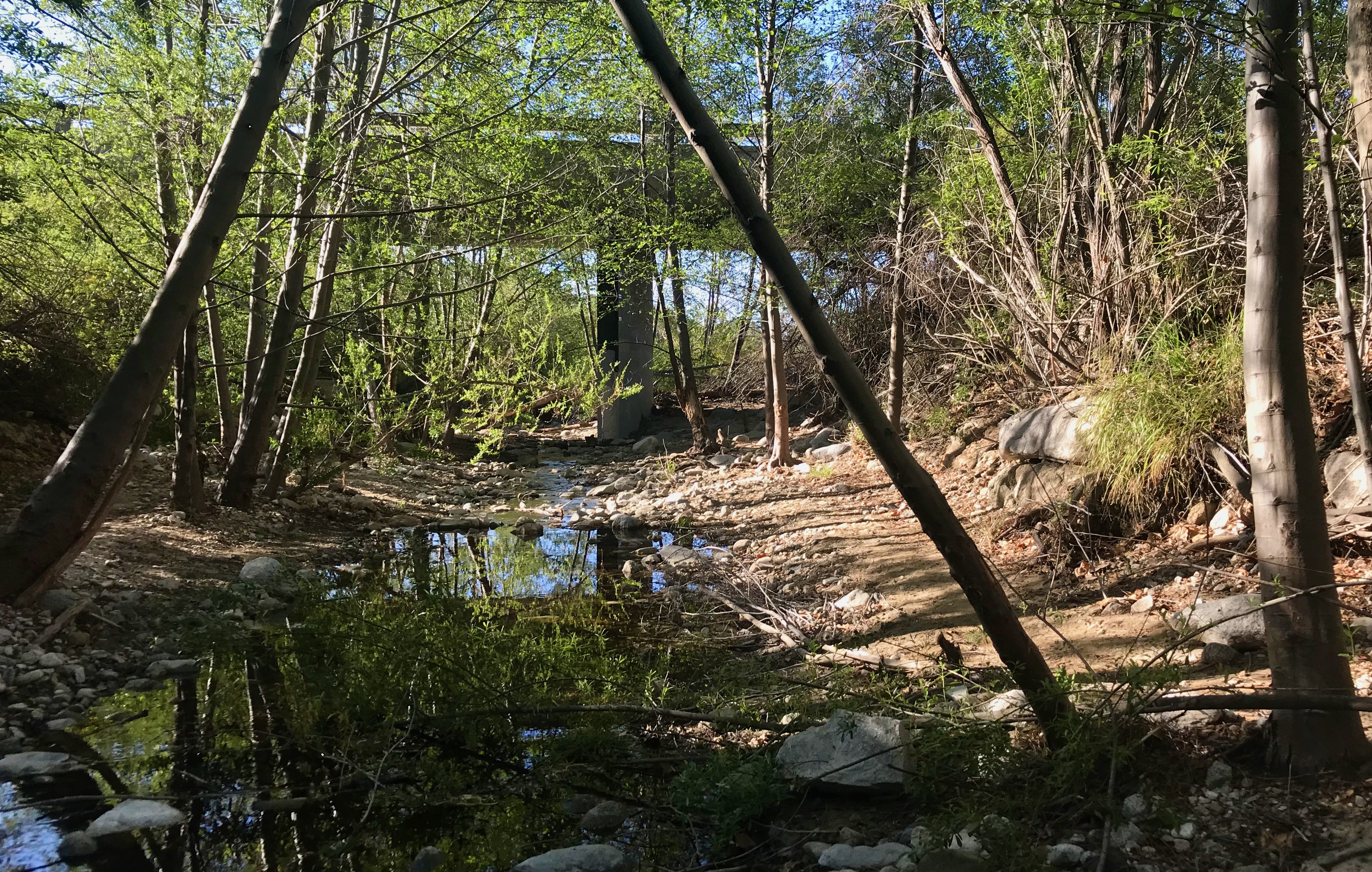
In the creek bed, a huge number of tumbled stones lined the floor while massive boulders edged and hemmed in the water. The various rocks took on a vast array of appearances and forms—from fresh fallen sharp-edged stones to tumbled rocks with rounded edges from years of being pushed downstream from thousands of years of flood events.
The trees, mostly alder, were massive with trunks more that 24 inches in diameter and lots or upper canopy growth. It appeared that many lower limbs had been removed, perhaps by those 100-year flood events of tall rushing walls of water moving into the lower arroyo.

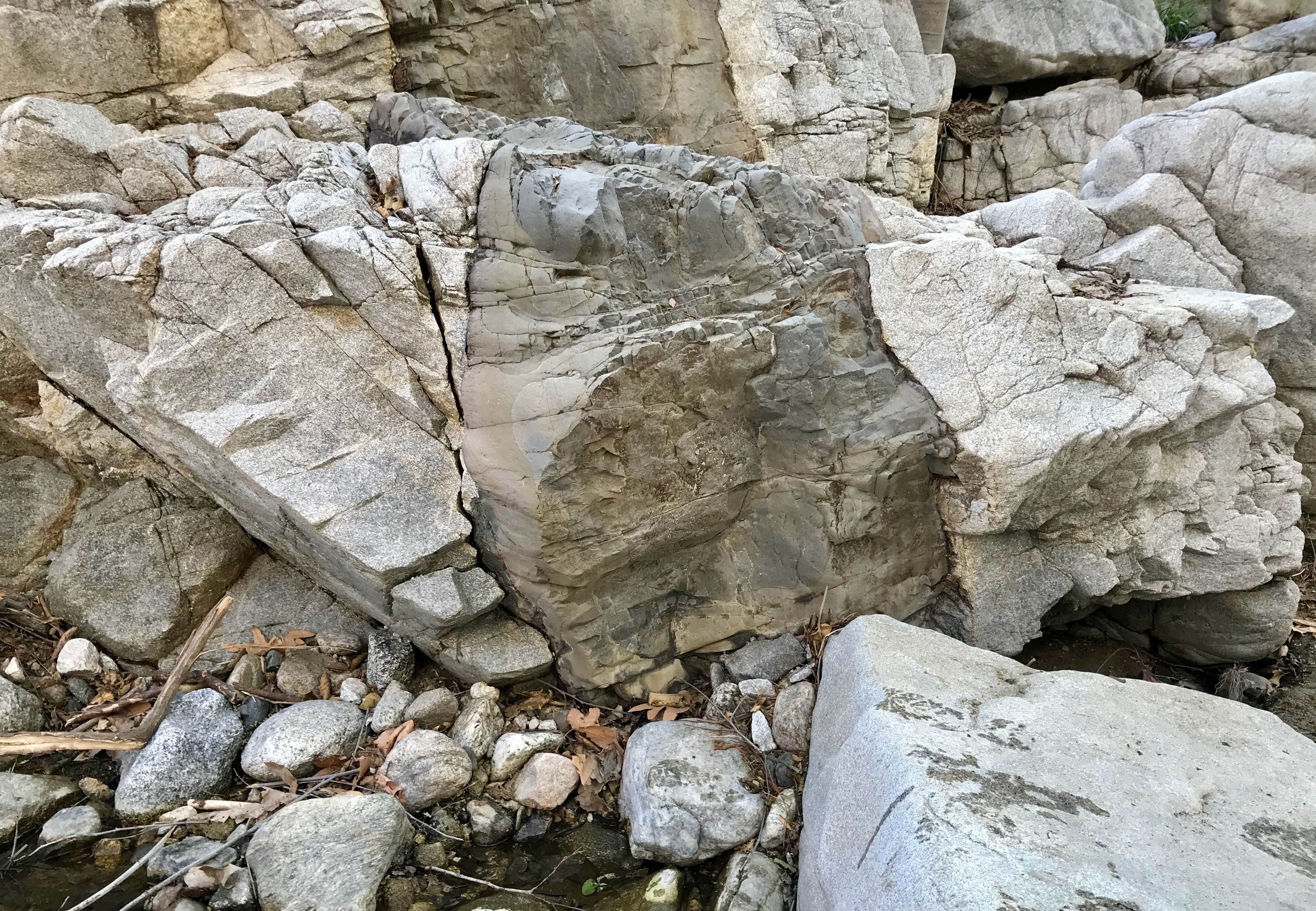
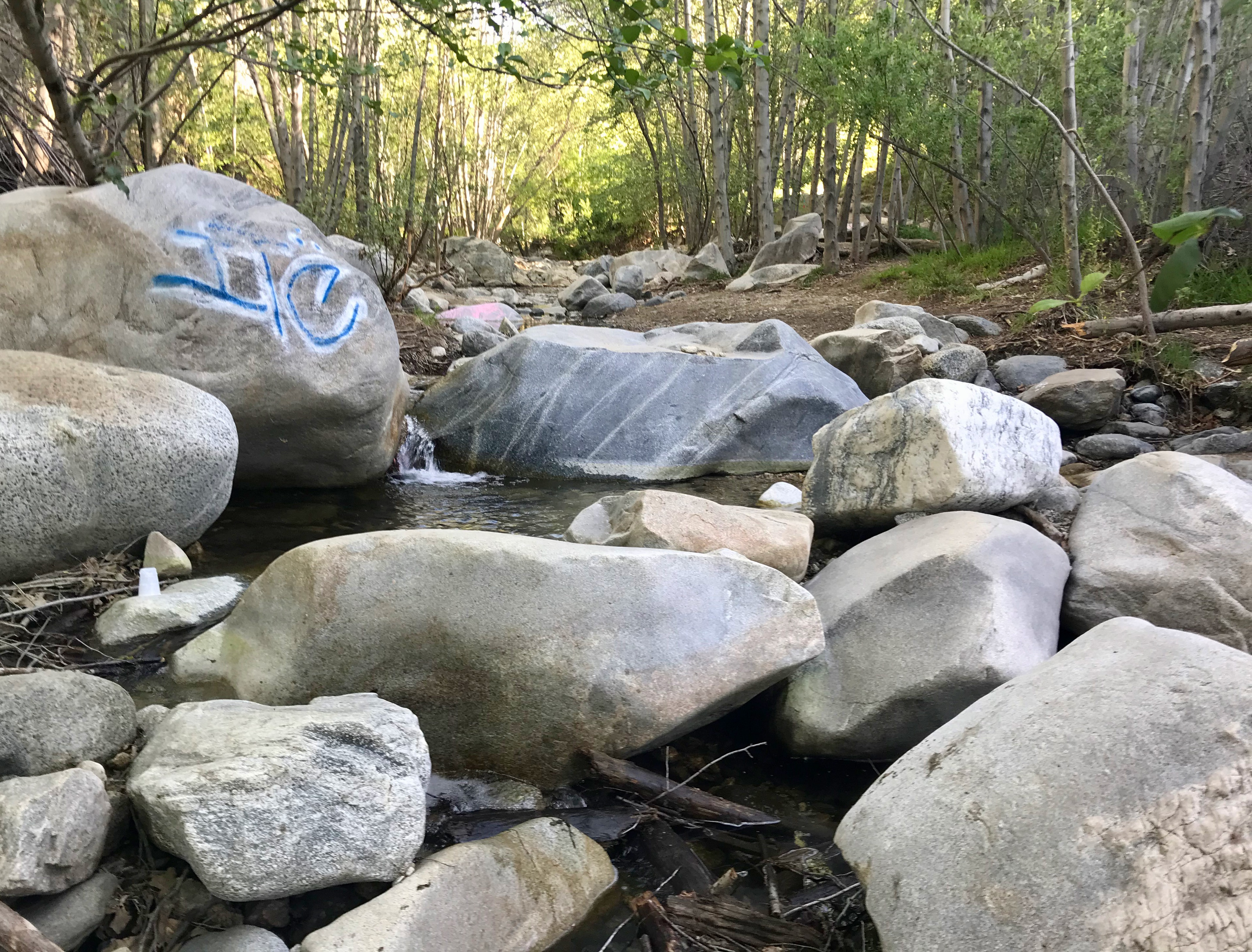
Mixed into the organic and inert stone were hunks of metal—twisted steel from some long abandoned (or lost) development up stream. Most likely, the hunks of metal were the washed-out culverts or similar anthropogenic intrusion into the natural space. Much of it smashed and firmly stuck deep into the gravel and stones, irretrievable without some massive mechanical intervention. Other man-made intrusions were large utility poles stretching power lines up the creek floor to some invisible destination. These massive structures were hidden, to a degree, until you stood below them like towering concrete and steel trees, stark and barren in the space.
Amazingly, life persists in the space with spiders making web holes to leap onto prey, lizards darting to-and-fro on the dry shores, and quail in the higher dry banks under scrub and brush. The riparian creek bed forest was alive and moving as much as the water that flowed through it.



What did strike me was the way people (other the group I was with) were using the space. Throughout there were several hikers, bikers, walkers, and people with young children, essentially using the space as a relaxing and learning lab or natural learning environment. It made me think that people, over the course of thousands of years, could have used places like this as locations of recreation or congregation to just enjoy the space and the bounty in it. Fish, I imagine, would have been plentiful. Fowl and other small prey along with water dependent plants for resources and food, used in daily life would have been more readily abundant in the upper reaches of the canyon. All-in-all, the Upper Arroyo would likely have been as popular back then as it is today, if not more so with native plants and animals in greater abundance without all the larger scale human interventions in the space and downstream. In the space itself, the atmosphere was calming in a way I’m sure it has been for millennia.
Reaching the second bridge, the riparian creek took a slightly different tone as the space broadened and more sycamore, sage and buckwheat encroached on the willow and alder edges along the eastern side. At around 10 a.m., the creek bed past the second bridge was still in deep shadow as the rising sun hadn’t over-topped the canyon wall making the space much cooler and hospitable an otherwise dry, full sun plants. Sycamore became the more prevalent and other more unique species had a presence including nightshade, castor bean, catch weed, snake root, reed seed plantain and a variety of grasses and weeds (including poison oak).

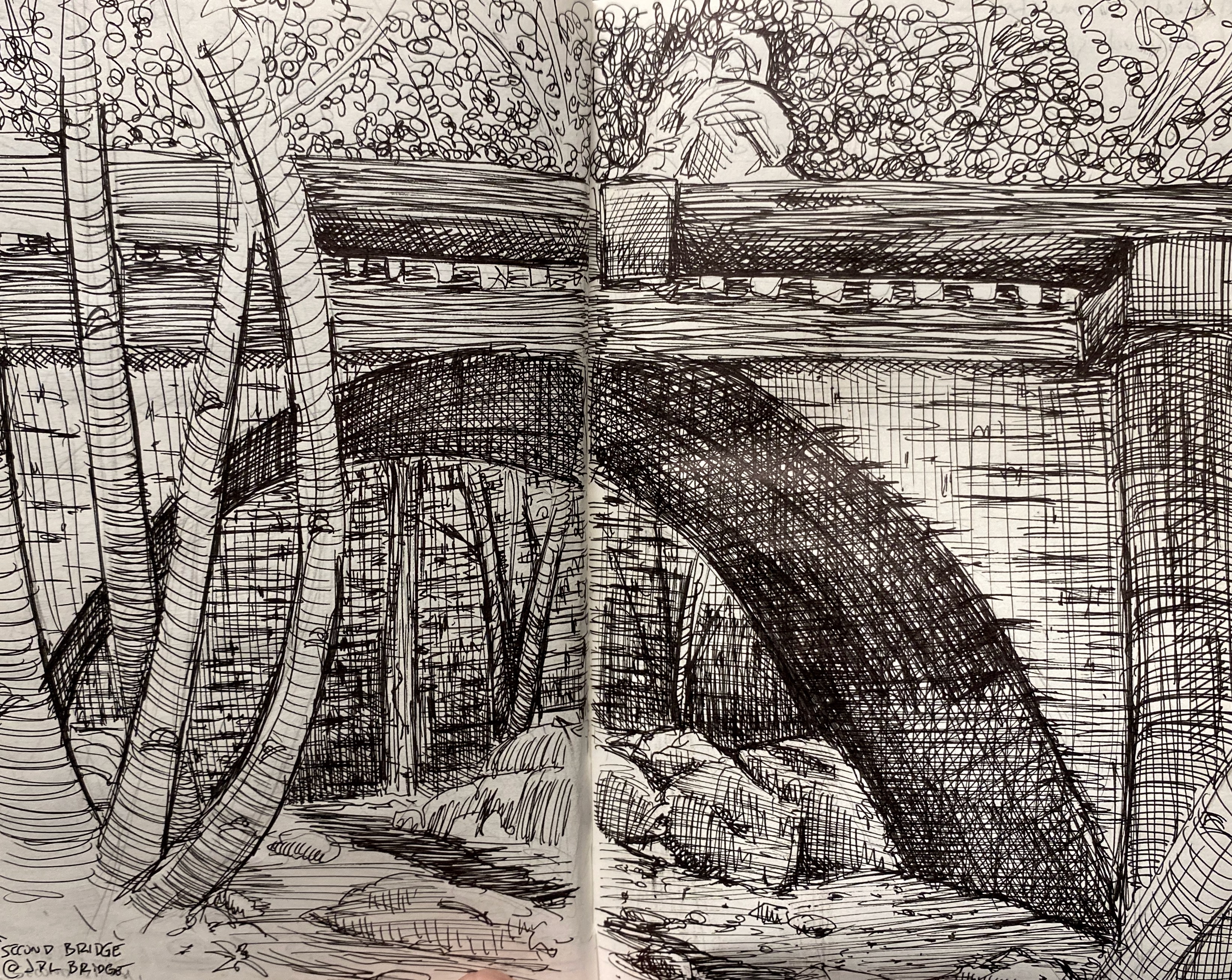
Broadly, it was a healthy space with many flying insects, hover flies, birds (like canyon wren) stink bugs and fence lizards around every turn.

Along the path to the third bridge, the creek widened, and the plant diversity exploded with sage scrub/oak forest and riparian ecosystems blurring into one another. That blurred line of hard edges likely had to do with the changing microclimates of the landscape through various parts of the day and time of the year. The slope and angle of canyon wall acting as a climate buffer shielding the sensitive plants from the strong sun at times and then giving a perfect keyhole of solar illumination to others in just the right quantity when they need it.
Just past the third bridge, I met a lizard, a carpenter bee, and a stink bug all within 30 feet of one another and in a spot without much human activity, likely leading to the wildlife’s willingness to not take cover as quickly as those downstream.

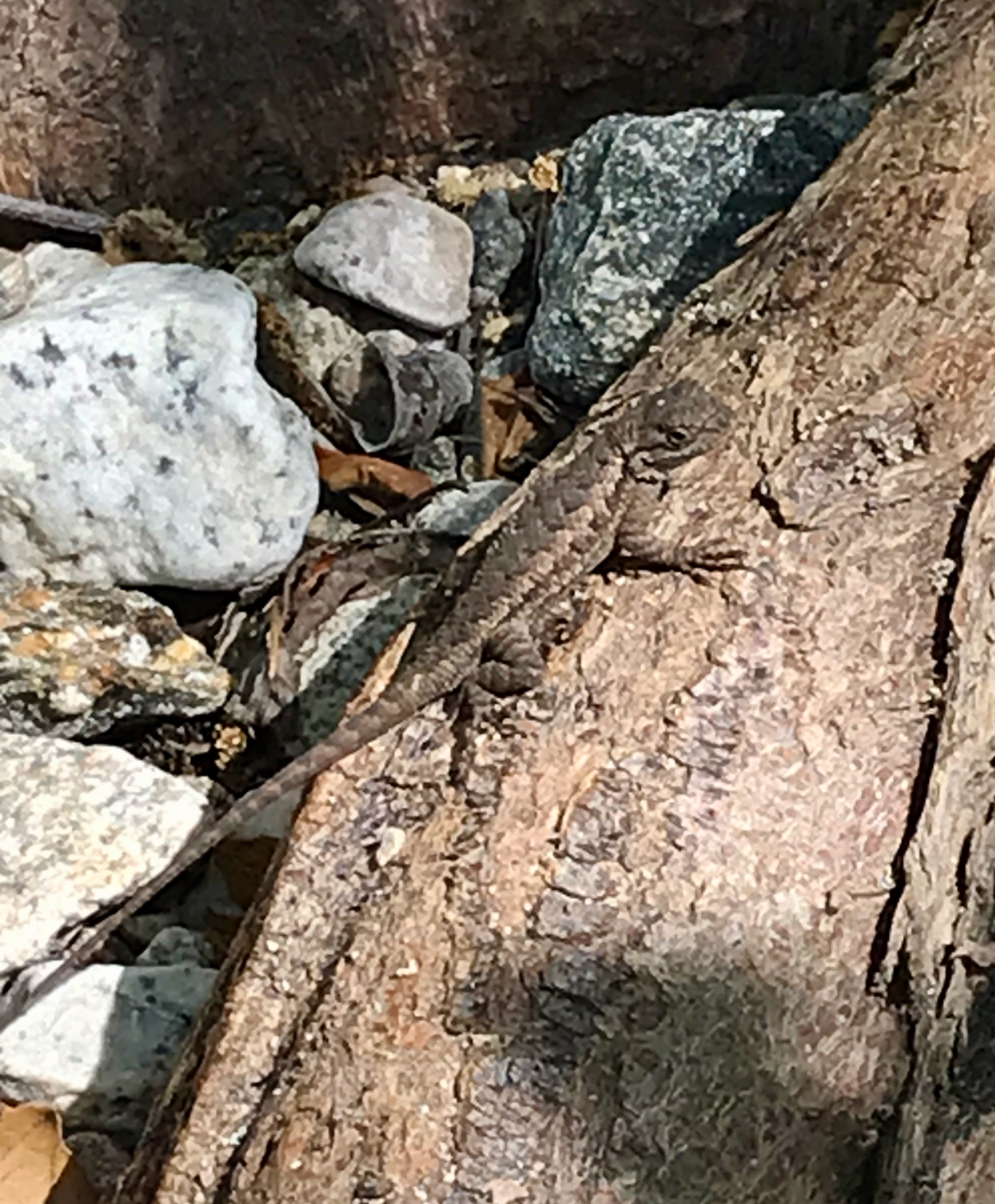

It was here that I ended my exploration and made my way back to the parking lot and concluded this trip into the Upper Arroyo Seco.
Field Observations
- People, young children, in learning groups or with parents
(and toys) in and along the creek. - Man-made elements, hidden in plain sight:
- (poles, culverts, stacked stone retention walls)
- Rocks: sand, gravel, fist-sized, boulders, massive car sized stones.
- Some tumbled (rounded/smooth edges)
- Some part of a larger conglomerate mix with intrusions.
- Many with different geologic formations and appearances
- Riparian ecosystems blending in and out of oak and sage chaparral forests
- Diverse: animals, insects and birds
- Tall and thick alders, oaks, sycamores through-out the space.
Observed Species
- California Quail – Callipepla californica
- Fence Lizard – Sceloporus occidentalis
- Canyon wren – Catherpes mexicanus
- Willow Apple Gall Sawfly – Euura californica
- Desert Stink Beetle – Genus Eleodes
- Sticky snakeroot – Ageratina adenophora
- Armenian Blackberry – Rubus armeniacus
- Trailing blackberry – Rubes ursinus
- Redseed plantain – Plantago rhodosperma
- American Nightshade – Solanum Americanum
- Western Sycamore – Platanus racemosa
- California Sage – Artemisia californica
- Buckwheat – Eriogonum fasciculatum
- Spider – unknown funnel weaver
- White Alder – Alnus rhombifolia
- Mule Fat – Baccharis salicifolia
- Grasses (variety)
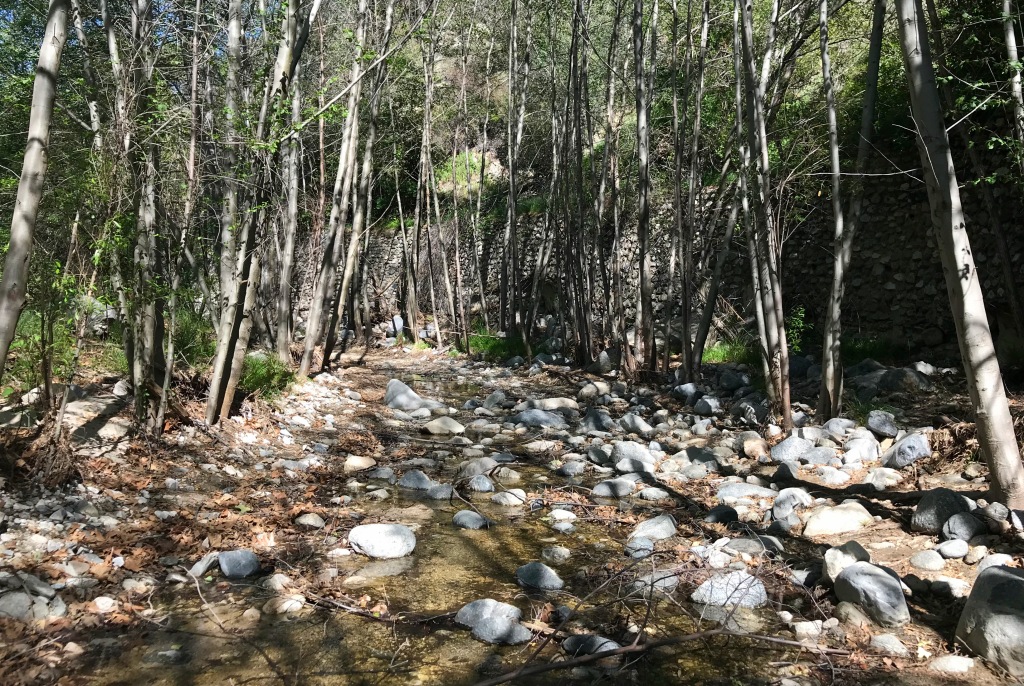
4 responses to “Upper Arroyo Seco – Visit 2”
[…] Visit 2 | Visit 3 | Visit 4 | Visit 5 […]
LikeLike
[…] 1 | Visit 2 | Visit 4 | Visit […]
LikeLike
[…] 1 | Visit 2 | Visit 3 | Visit […]
LikeLike
[…] 1 | Visit 2 | Visit 3 | Visit […]
LikeLike